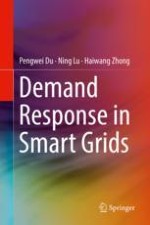Abstract
Load management algorithms are widely used to manage and coordinate demand response programs for providing grid services such as peak shaving, load shifting, load following, and frequency response. In general, there are three control approaches: direct load control (DLC), indirect load control (ILC), and autonomous load control (ALC). In DLC, utilities or load services aggregators will directly control the on and off of a controllable load and the owner of the controllable load will not interfere with the control process. In ILC, the owner of the controllable load will respond to a control signal by setting up a triggering threshold or a response curve. In ALC, the controllable load is equipped with an embedded control logic that allows it to autonomously respond to system frequency and voltage deviations without communicating with utilities, load aggregators, or its owner.
Unlike managing generators, loads have limited controllability and observability. Normally, an appliance can either be turned “on” or “off” and its power consumption cannot be continuously varied. In addition, its operation is governed by time-varying external variables such as ambient temperatures, operation modes, and user’s comfort. Furthermore, the cost of controlling loads changes with respect to time-of-the-day, customer comfort preferences, occupancy, etc. Therefore, many well-developed energy management algorithms, such as unit commitment and economic dispatch, are not applicable to manage demand response (DR) programs. It is thus critical to understand a few basic design principles that account for those distinct characteristics of load management to design and develop reliable, robust, and economical DR energy management systems.
